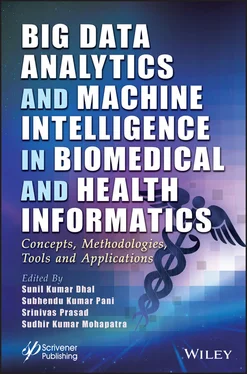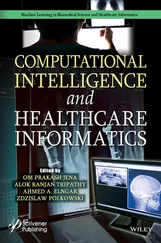Kaiser Permanente is setting the standard in the United States and may serve as a model for the EU. They’ve fully implemented a system called Health Connect, which allows data to be shared across all of their locations and simplifies the use of EHRs. According to a McKinsey report on big data healthcare, the integrated system has improved cardiovascular disease outcomes and saved an estimated $1 billion through reduced office visits and lab tests.
Television conferences, smartphones, and other wireless devices, and wearables being able to provide on-the-demand healthcare have recently brought about a major advancements in medical field using “Telemedicine”. A “Telemedicine” term is used to describe healthcare and treatment facility via electronic devices. Electronic or satellite technologies are used for the delivery of clinical services that are not close to where patients are located.
Physicians use it for primary consultations, for early detection, for the development of disease, and for educating their colleagues, and as a tool for remote monitoring. While some uses, like robotic surgery, tele-surgery, allow them to operate at a quicker pace with high-resolution data feedback, these do not require the doctor and patient to be in the same location; others like ultrasonography allow for the use of wider applications like fast-molecular imaging/live motion, still apply the principle of real-time feedback.
Clinicians deliver highly personalized treatment plans as well as helping to keep patients out of the hospital. Prior to this most healthcare organizations had used analytical techniques such as demographics, maps, databases, and graphical presentations in conjunction with predictive analytics to investigate issues related to healthcare delivery system growth and geographical issues. Additionally, by making early judgments on how the patient will respond to changes in his or her condition, this helps clinicians predict acute illnesses before they become worse.
By keeping patients away from hospitals, telemedicine helps greatly and reduces the cost while improving service quality. Patients don’t have to wait in line and doctors don’t make time wasting in line or dealing with unnecessary paperwork a priority. Telemedicine particularly improves access to care, since monitoring of patients’ physical conditions is now possible no matter where they are, at any time.
Nowadays, much information is given to all databases, with the end result that it exists in multiple locations for purposes that are general in nature. There is no relationship between the tabular and non-relational schema in a NoSQL database. To those of you are not aware, there are many different NoSQL databases that are categorized into four main types:
1 1. Those based on the keys (Key-value).
2 2. In-memory (Family) in which column-store (file-family).
3 3. Document-store (Data-memory).
4 4. Graph-store (Data in memory).
It’s good for simple data that is only read rarely, but has the potential to expand to contain more data because of its expandability. It keeps vast amounts of data in one column family; in other words, the column family database stores huge numbers of individual columns all at once. The semi-structured data contains vast amounts of information pertaining to document formats, with regard to the documents in it, or data (opinions, theories, opinions, or interpretations). The last thing on the graph is the inversion of an N-to-M relationship, which is a Q-to-M relationship which is recorded as an N-to-entry database.
1.5.4 Framework for Reconstructing Epidemiological Dynamics (FRED)
It is an open-source modeling that can apply to a wide variety of disease patterns. Every resident, office holder, owner, and entity location (entities which hold locations or locations which hold entities) is listed in the regional economic data system FRED. Each agent is distinguished by both by their personal sociodemographic features (such as whether they are working, have a sex, and reside in a particular residence) and their daily activities (their occupational, for example). The experimental populations that are used in the FRED simulation to work out the potential spread of disease are called artificial populations.
1.5.5 Advanced Risk and Disease Management
The hospitalization risk for a specific patient could be tackled using big data and healthcare; it is something we cannot avoid. It is also an excellent way to preserve the original. The use of more general information is readily available to any institution, like the type of medication used. The number of illnesses and the amount of visits enable healthcare providers to provide more precise treatments and ultimately reduces the rate of hospitalization. While space and resources will be available for the healthiest patients, this degree of risk calculation will also mean that expenses will be kept down for in-house and thus enhance the chances of maintaining our practice’s financial security. This is a real-world demonstration of how analytics in healthcare can be used to help and save lives.
Measuring and identifying factors such as genes, proteins, cell membrane and organ systems, the immunology of specific diseases, and epidemiology can also expand their capacity for care by reducing operating more economically while improving the quality of data management costs across the healthcare field.
1.5.6 Digital Epidemiology
There is a form of epidemiology known as Digital Epidemiology that incorporates digital methods from data collection to analyze data. It boosts epidemiological methods, such as case reports, control group studies, and ecologic studies. It makes use of case studies, ecological studies, and crosstype studies that include cases in its investigation and a mix of controlled trials and cohort studies, such as separate cohorts and ecological case studies. It also makes use of data sourced from other sectors such as data sets that were originally developed for health purposes or information sets.
1.5.7 Internet of Things (IoT)
There was previously only one model for patients interacting with doctors i.e. in person and via telephone or tele and text messaging. There was no way that doctors and hospitals could monitor patient health continuously, and thus be able to give prescriptions appropriately.
Innovations that can assist patients and clinicians in the ability to keep them safe and enhance care with smart equipment enabled by the Internet of Things (IoT) offers new possibilities for monitoring people in the medical field. At the same time, it has resulted in patient engagement and satisfaction because physician and patient communications have become more straightforward. Furthermore, patients’ health can be tracked and therefore, reduces their length of stay and lowers their likelihood of having to return to the hospital after discharge. Widespread implementation of the IoT can help lower healthcare costs and increase treatment effectiveness.
It is almost certain that the healthcare industry will be changed by how it connects with devices and the physical bodies of people by means of Internet of Things. It has applications in the healthcare industry, as well as being beneficial to patients, family members, physicians and hospitals.
1.5.7.1 IoT for Health Insurance Companies
Healthcare devices are rapidly becoming more connected, and thus many approaches are necessary to deal with the various scenarios that may arise from that. A health-monitoring device can be used to assist in insurance under writing and operational tasks, for example, is it possible for insurance companies to leverage that data providing this information will help them detect and evaluate potential clients’ claims of fraud as well as identify those who could benefit from this method of treatment.
Читать дальше












